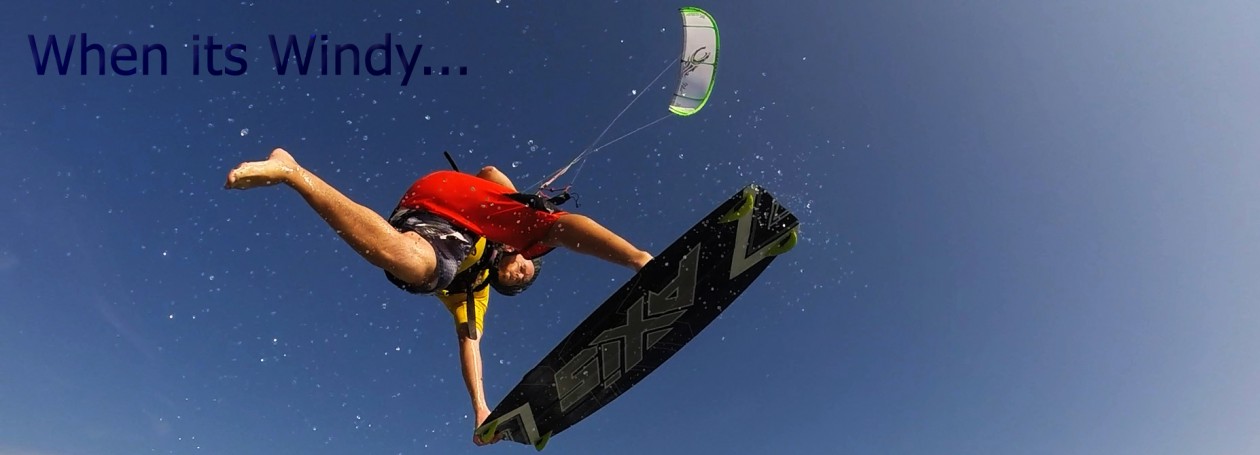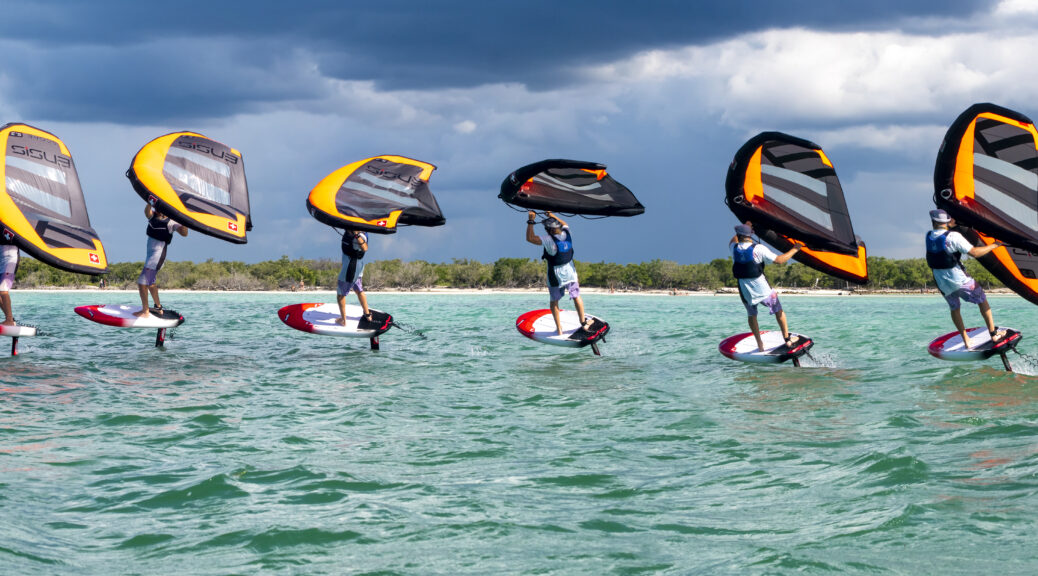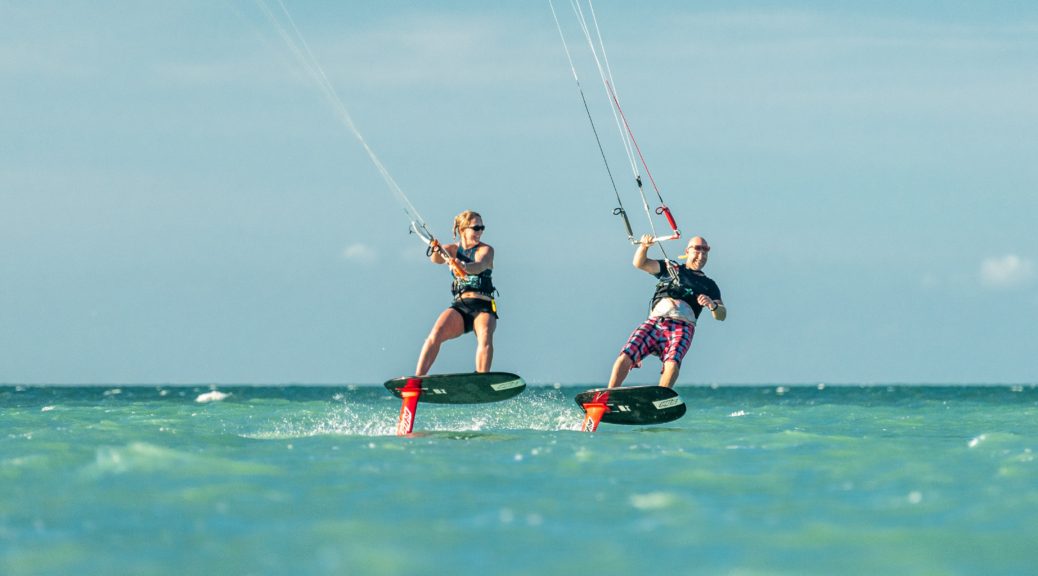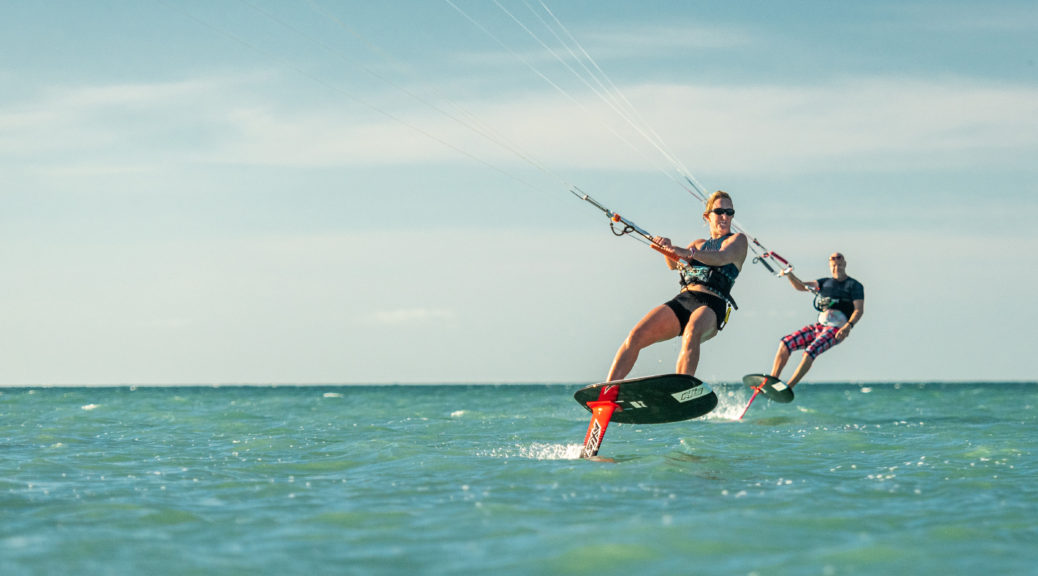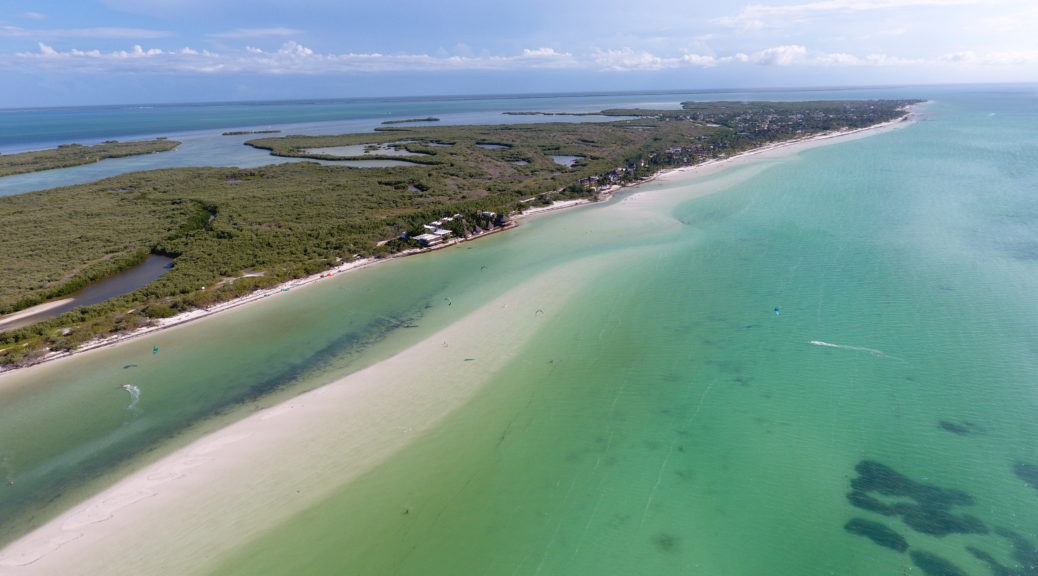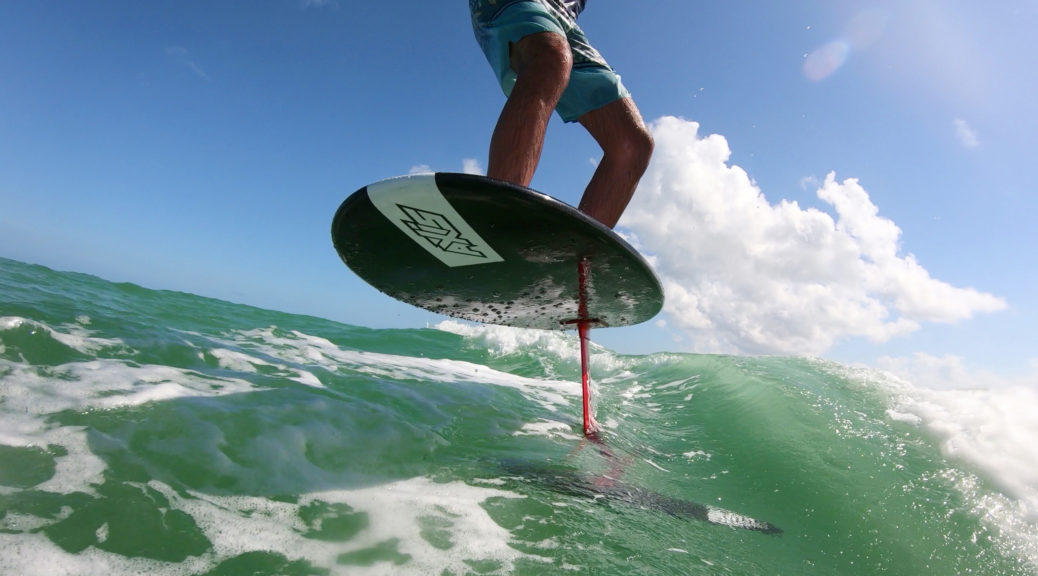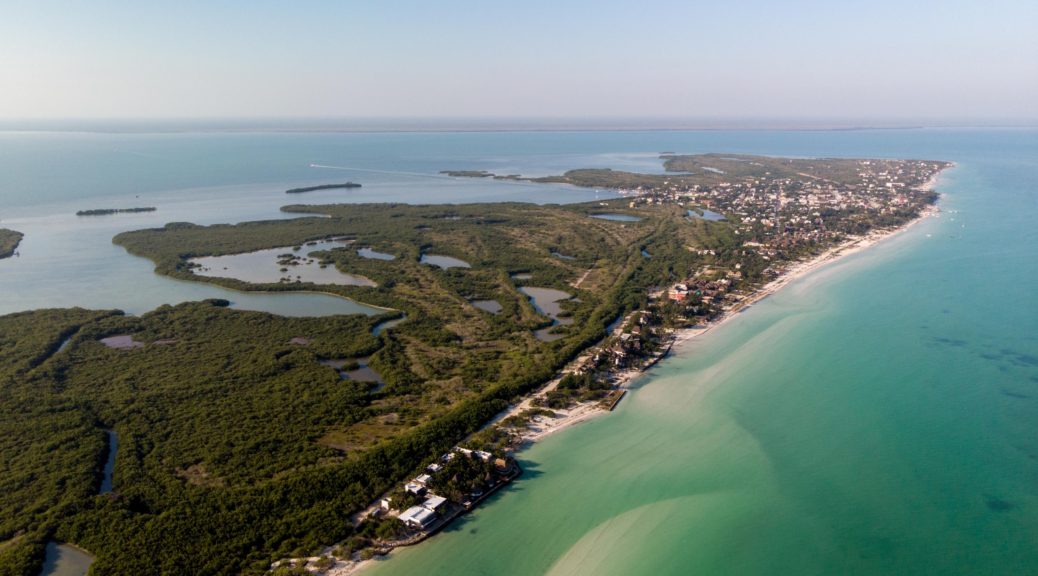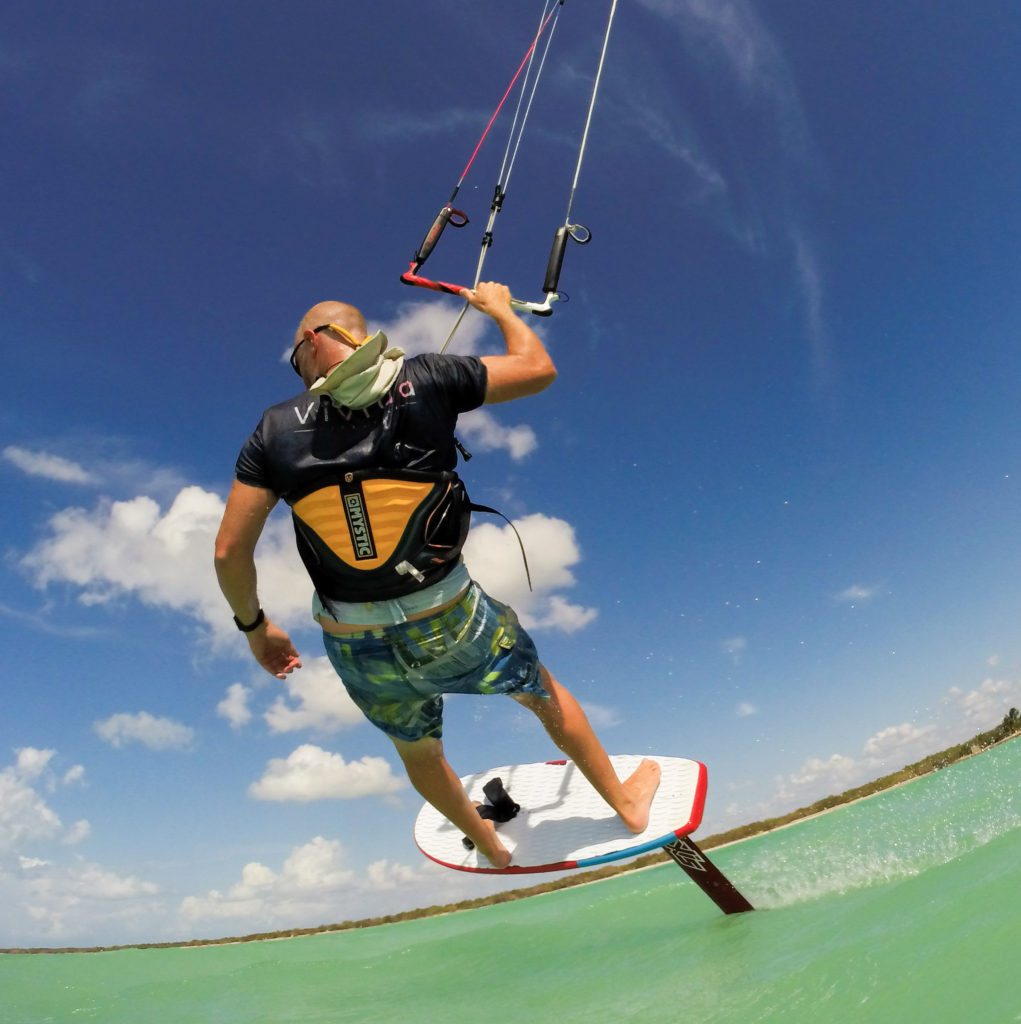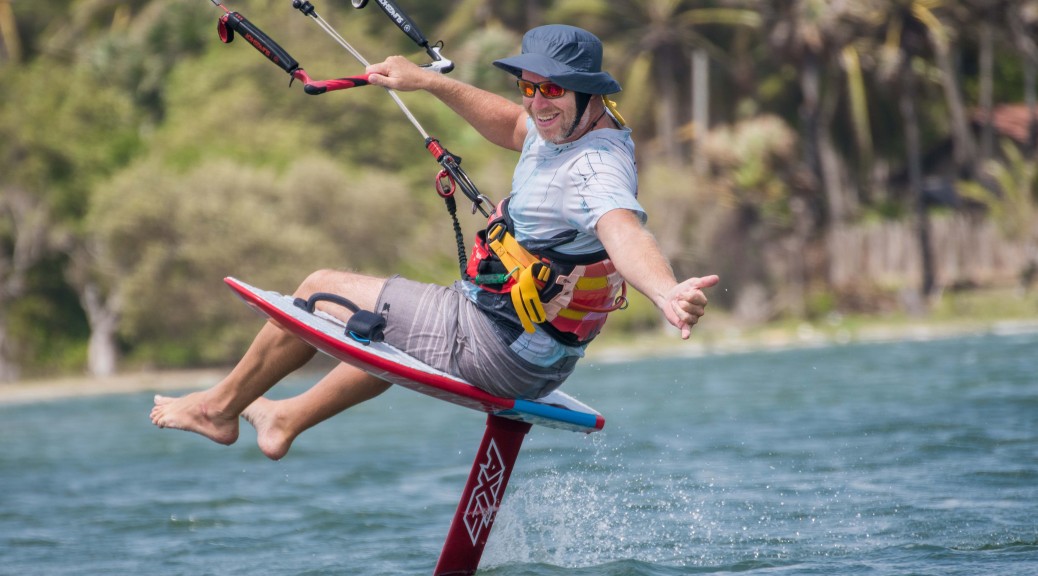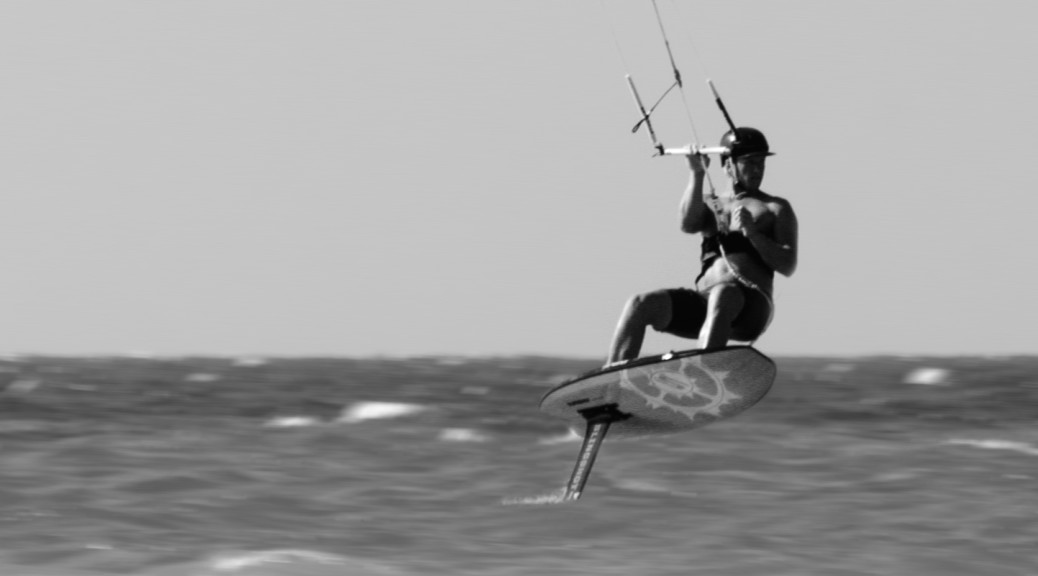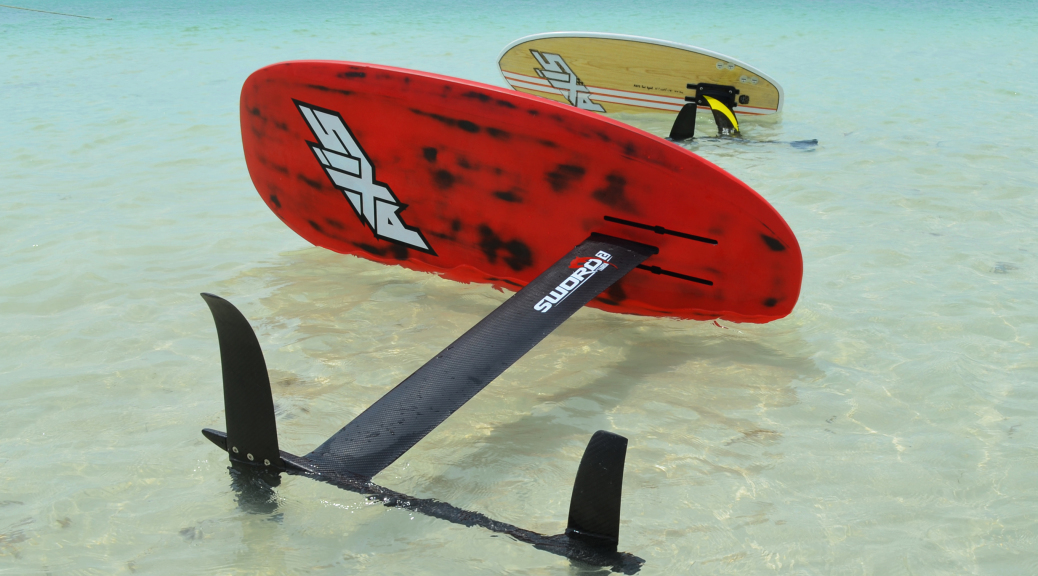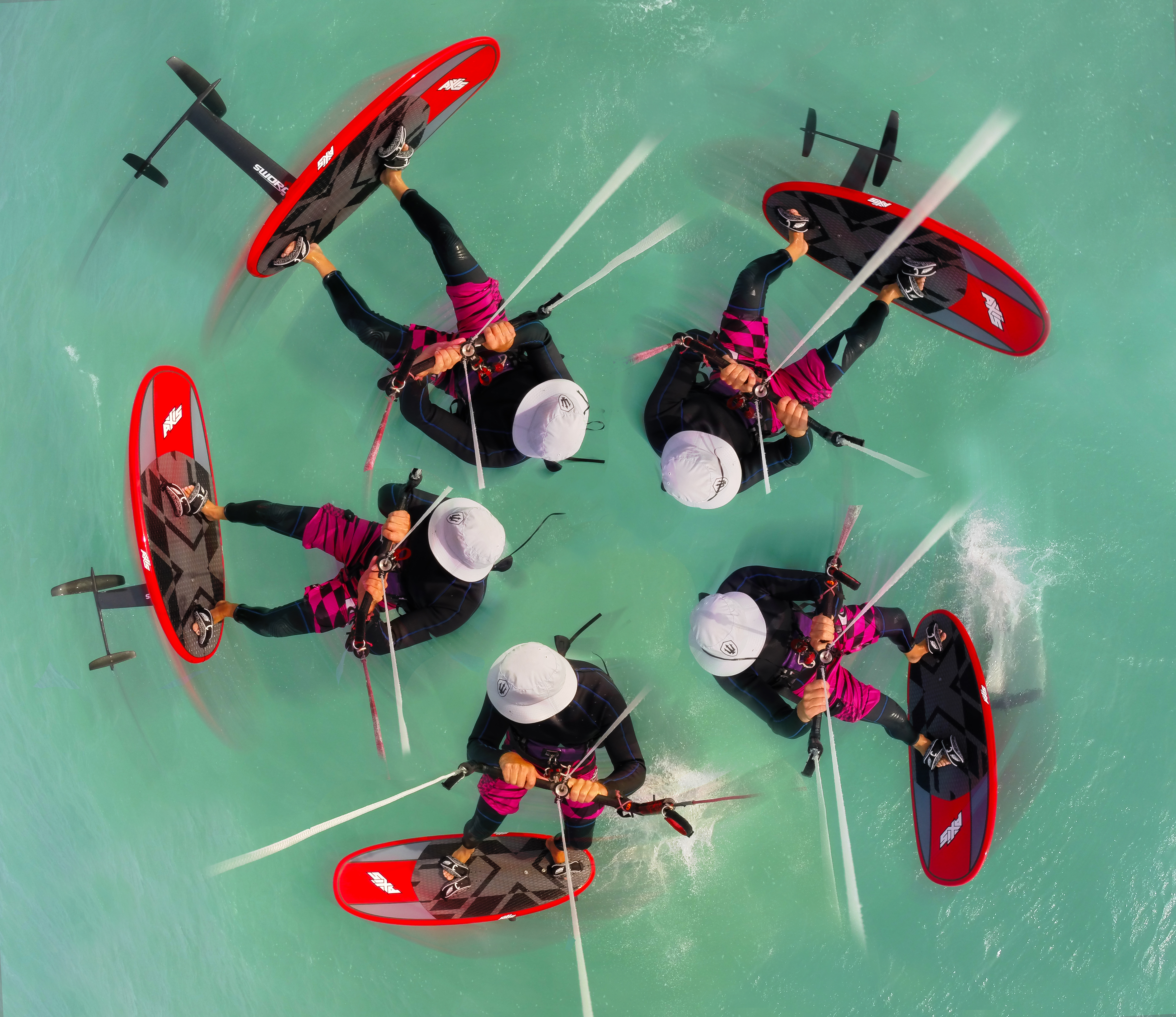We’ve been taken over by WingFoil Fever here in Holbox, Mexico
Cathy and Jonny are now both certified IWO Wing Coaches
Check out the new page to find out more
WING FOIL
also check out
Holbox Kiteboarding School for wing lessons and rentals
they are affiliated to
International Wingfoil Organisation
TIKTOK – Wingfoil Holbox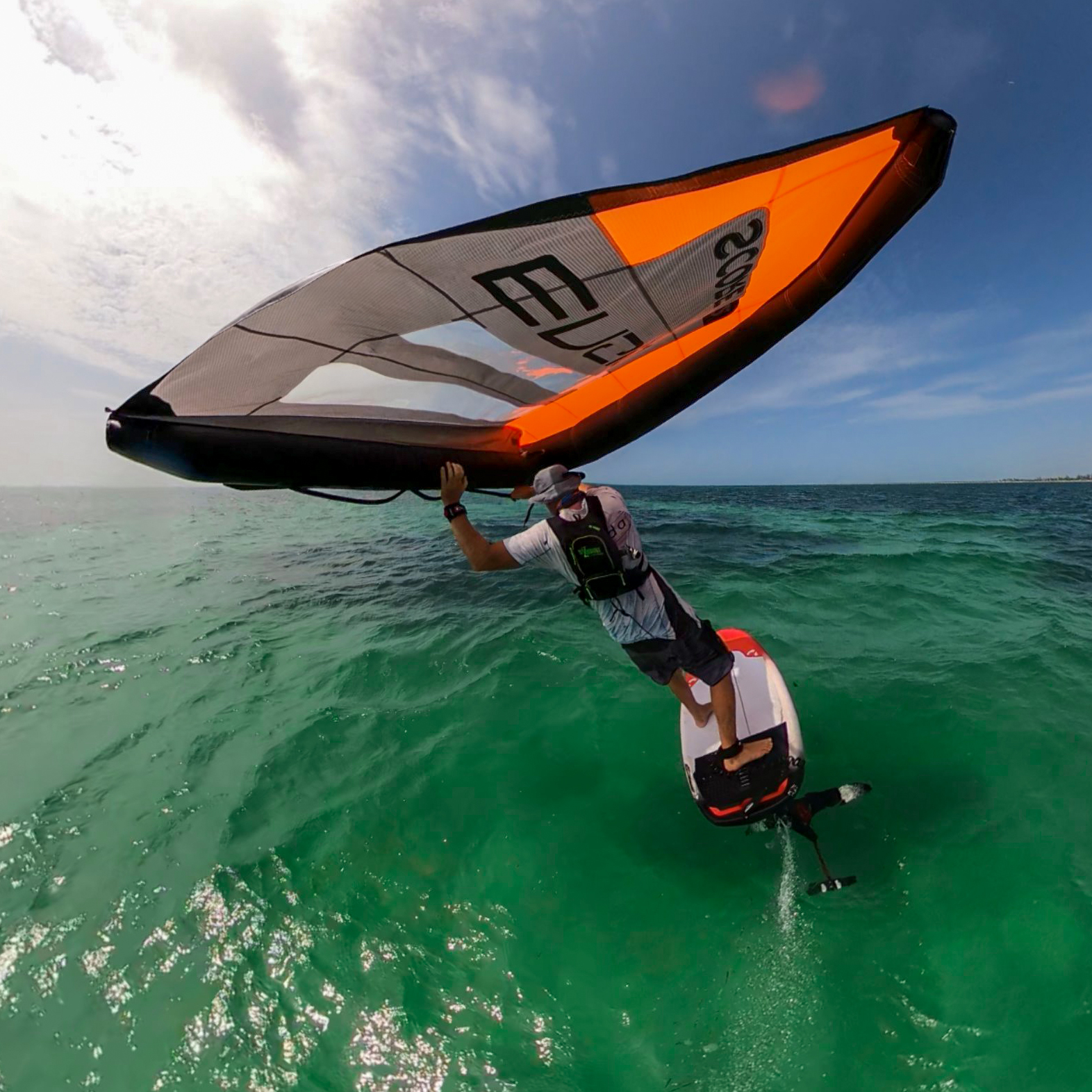
Latest Kite Foil Video
Where are all the female kite foilers?
by Cathy Padgett
When you see those foilers floating across the water, gliding along, making it look smooth and easy…why are so few of them women?
It’s not just at our local spot in Holbox, Mexico, where we currently have 2 ladies foiling.
In the “Women’s Kiteboarding Community” Facebook group, Nina Macaraig says that in Belmont Shore there are some new lady foilers this season, (awesome!) but they make up a small portion of the overall kiteboarder population.
I’m going to take a look at why you should give it a go and what has been holding the ladies back.
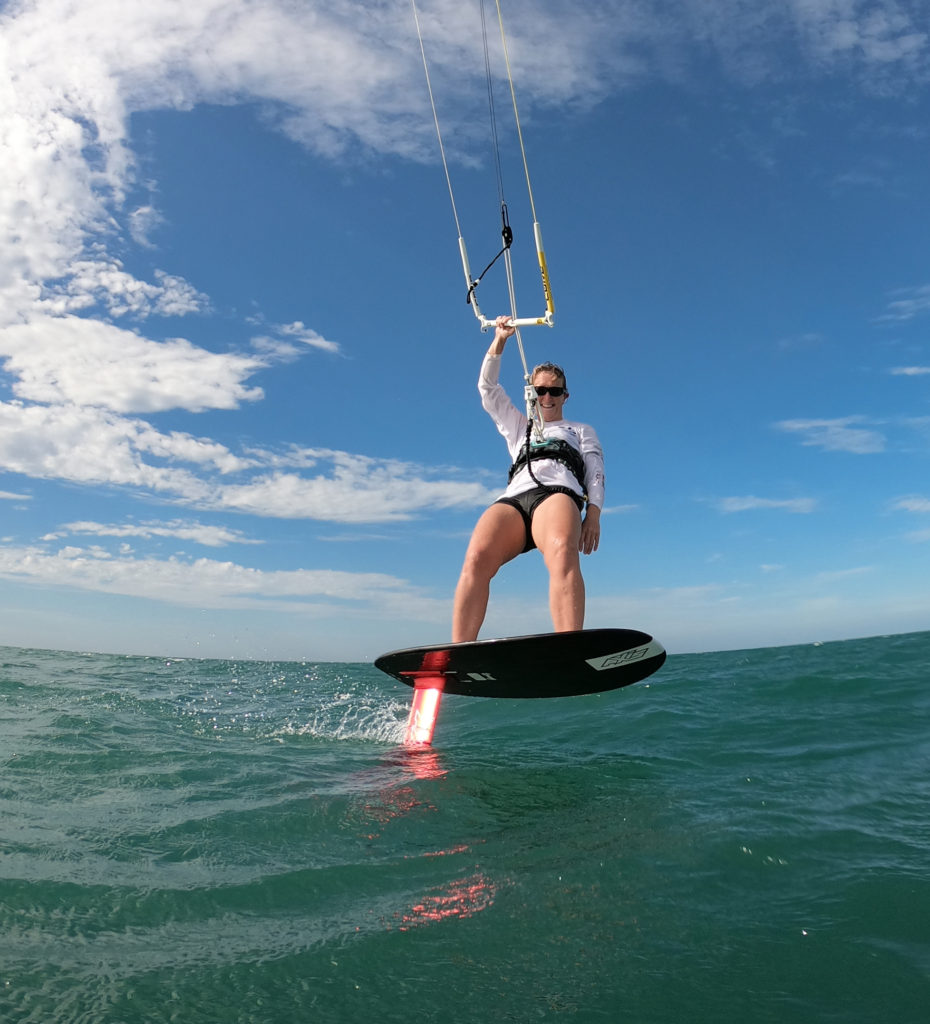
Why should you be thinking of learning to hydrofoil?
Do you want to feel like you’re flying, on a magic carpet floating on the water? If you want to see what crazy angles upwind you can go, covering greater distances and exploring more? Maybe you just want the challenge of learning something new, if you find you’ve reached a plateau with your twintip, or just sat out too many sessions as the wind wasn’t quite right for your twintip…
It’s not just something new and fun to try, it’s something to triple or even quadruple your time on the water. It makes choppy water or less than perfect winds become a pleasure to ride.
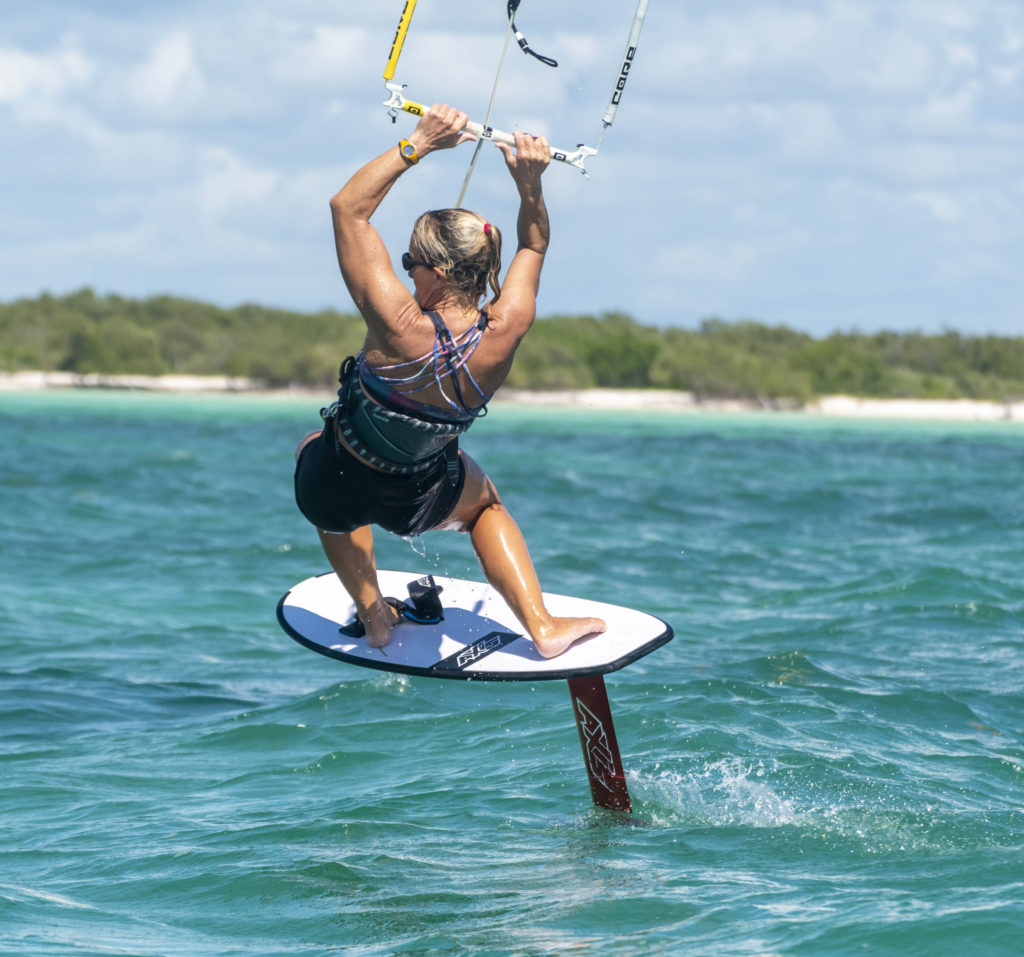
Here’s what other ladies have to say about it:
Steffie (Germany)– “I foil as it’s different, it so cool to just fly! I found I was doing the same old tricks with my twintip, and conditions on the lake great are for foilboarding. Foiling in the waves is something different and amazing too. I tried a hydrofoil race and it was just so much fun.”
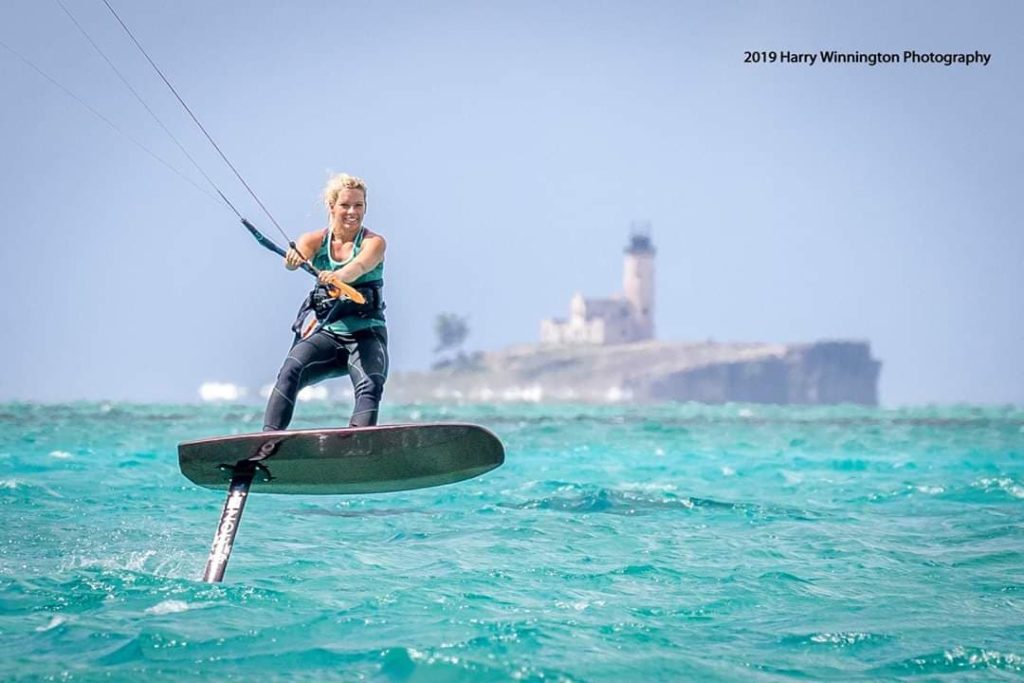
Eva (Colombia) – “It’s brilliant! I love it, I’ve never done anything quite as cool as this. I tried (youth) twintip racing, heard about foil racing and now I’m part of the Youth Federation 2024 Kite Foil project.” (Edit: way to go Eva! One to watch for the future!)
Nina Macaraig (USA, Always Kiting) – “I love that there’s so much to learn on the foil. Foiling for speed feels like sailing more than kiteboarding, and so to me it’s almost like a different sport. The feeling of slicing through the water with the kite lines humming from the speed is really incomparable. Plus I have basically quadrupled my time on the water! I also love the fact that foiling requires so much more finesse than twin-tipping, where you can muscle your way out.”
Susan B (USA, Recoup Wellness Co-founder) – “It’s exciting to learn! The feeling is surreal, activating parts of your brain that are normally on autopilot. I love that feeling of awareness and awakening when you challenge your body and mind to something try new. “
Iris (Germany) – “I loved the idea of having another option for low wind days! I was curious and found it fascinating, and I enjoy learning something new. I love this feeling of being above the water – the silence and tranquillity – the waves below you – that you can go basically everywhere to all directions. You want deeper waters and this usually means less crowded spots with more space on the water, so you get to know and enjoy more beautiful spots. Foiling gives you so much more flexibility so you really can extend your personal wind range. “
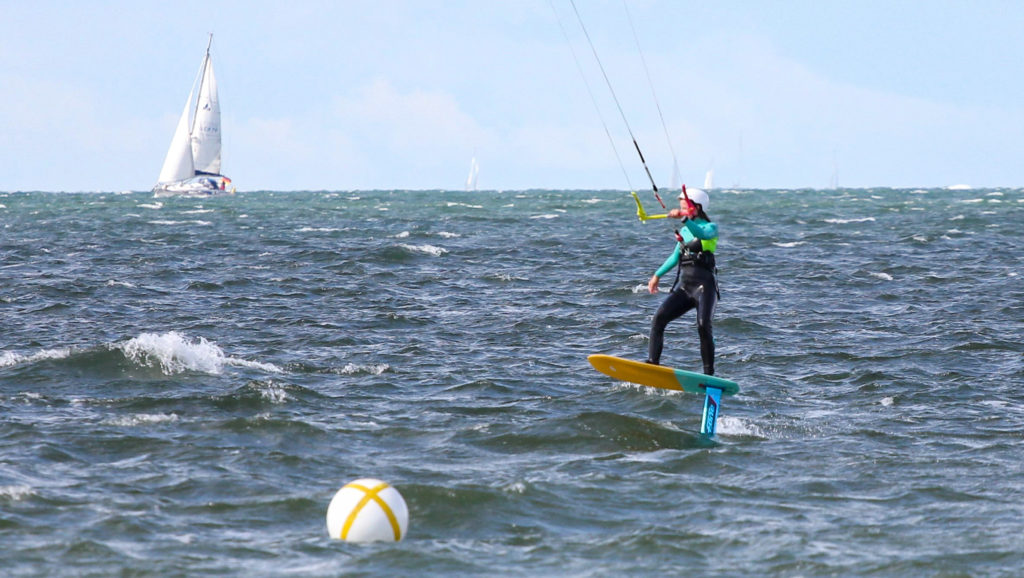
So, what’s holding back women from getting into this different branch of kiting?
Checking in with the ‘She Flies’ group, (an awesome bunch of lady shredders), a few comments came back:
- It’s only for low winds
- It’s too expensive
- I’m not good enough yet or lacking the confidence to try.
- I haven’t even tried a directional yet
- I’m happy with what I’m doing at the moment
- I’m intimidated by the board
Let’s have a further look into these comments, and do some myth busting!
Myth #1 – “it’s only for light winds”
Hydrofoiling will allow you to go out in lower winds, that’s for sure, but it’s most fun from 12-18knots. It’s even possible in high winds – my boyfriend absolutely loves ripping around on his 6m in 20+knots…and as a heavier guy, it’s amazing for him to be able to enjoy smaller kites on his foilboard.
Learning to foil shouldn’t be done in super light winds, where it’s hard to relaunch the kite, or the kite falls out of the sky. In the beginning having good stable winds is helpful, just like when you learnt to waterstart on a twintip. Sure, as you progress, you’re likely to want to go out in lower winds, so your kite control will become key. You’ll find that foiling will improve your technical skills too.
Recognising when the wind has changed, or starts to become flaky is an important skill. Since foiling I’ve learnt more how to read the water conditions to anticipate gusts or a hole in the wind. The dreaded foil ‘swim of shame’ comes when people have stayed out too long or risked foilboarding when the wind is too low. Your choice!
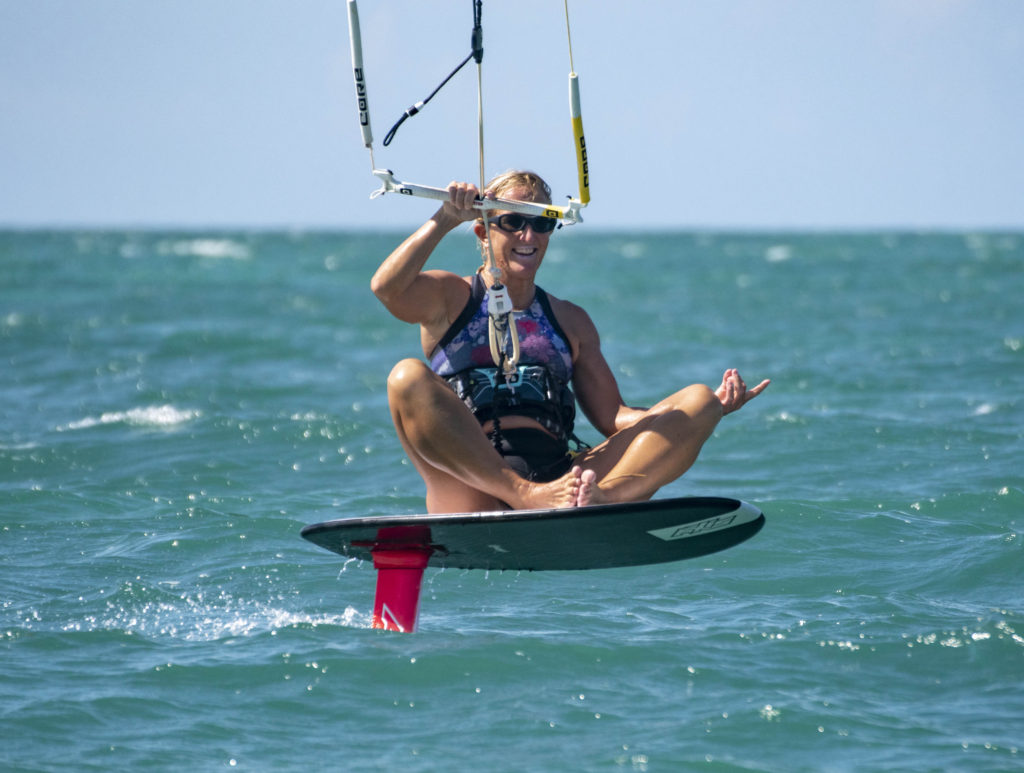
Myth #2 – “it’s too expensive”
A few years ago there was only race equipment available, lots of carbon, high end gear, which I agree, is super expensive. Fortunately now there’s a lot more entry level foils, different styles, and much less intimidating prices! If you wanted to ride in lighter winds and need to buy a larger kite, a new foil and board can even be cheaper than a new kite and bar. Not to mention it will be much more fun 😉
I really rate the Axis K series foils as a super set up – suitable from beginner to intermediate and more, plus the wings are interchangeable if you want even more choice. I chose a 600 front wing as it’s super stable, but also gives me chance to go fast. More importantly, I’ve made huge progress since changing to this wing from a faster racier setup.
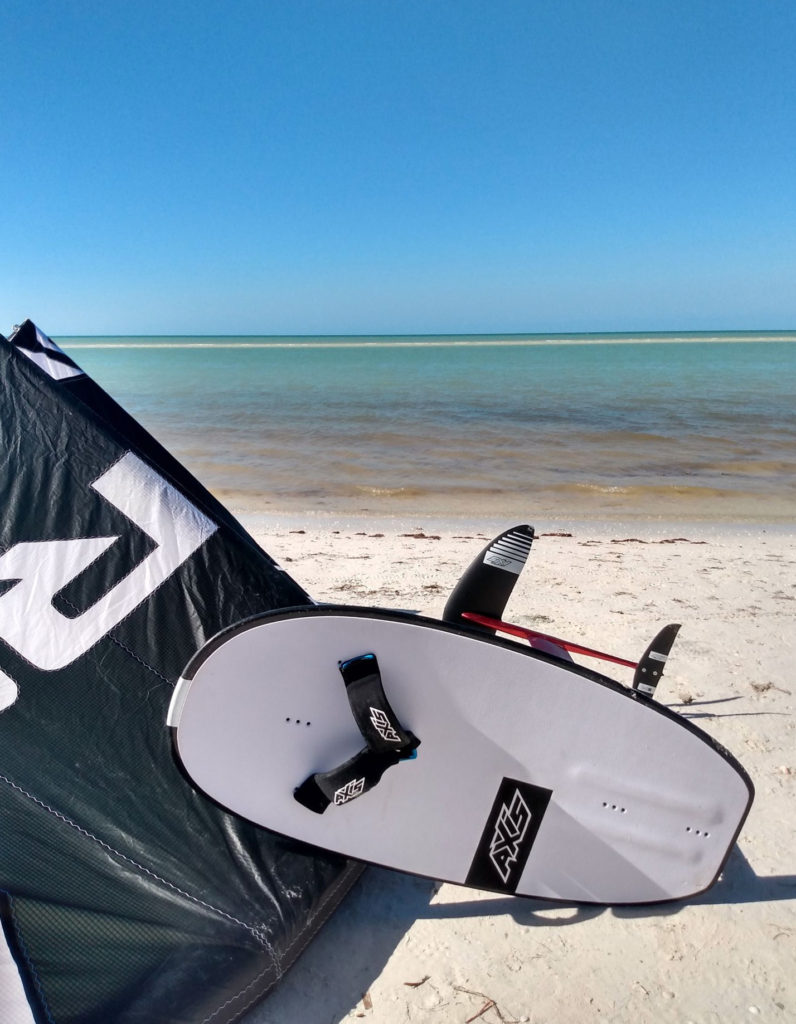
Myth #3 –“i’m not good enough yet”
If you’ve read this far then you almost certainly are good enough!
If you can ride upwind comfortably, do a basic jump, and have good kite control, then you have enough basic knowledge to learn to foil. You don’t need to be an expert learning the latest unhooked tricks, or get the biggest airs, just a willingness to learn and have an open mind.
I strongly recommend taking lessons, as you’ll get the fastest progress in a short space of time. You’ll cover all the essentials in a safe and controlled manner. The idea is to foil when you decide, under control, rather than uncontrolled flights leading to wipeouts.
You WILL need a ton of patience, and good kite control as you start to figure out how the balance is different, and how the board works differently. I’m not going to lie, you will probably have a crash or few, but it’s part of the learning process!
From teaching kitesurfing I’ve found out that women are often more intuitive and want to understand how things work before trying it, often with a more subtle approach. Great news for learning to foil, as this ‘step by step’ approach works really well. You simply can’t use lots of force to get yourself up, it needs to be more thoughtful.
Myth #4 -“I haven’t even tried a directional board”
Previous experience on a directional or surfboard isn’t necessary. It helps later on, when learning to jibe or tack, but in the beginning you’ll be learning about the balance and trying to get that silent feeling as you glide above the water. Smooth!! By the time you’re learning to tack and jibe you’ll be hooked anyway…
Myth #5 -“I’m happy with what I’m doing at the moment”
That’s awesome if you want to enjoy your water time, and the current toys available to you. I’ll just say that foiling has allowed me to ride out in more conditions, and times when the conditions aren’t that good for my twin tip. If the wind is gusty or tricky, if there’s a current running, then I know I’ll have much more fun on my foil.
I guess I’m being picky about twintip conditions, as choppy water and gusty winds can be fine on a twintip…. but it’s just smoother and easier on a foil.
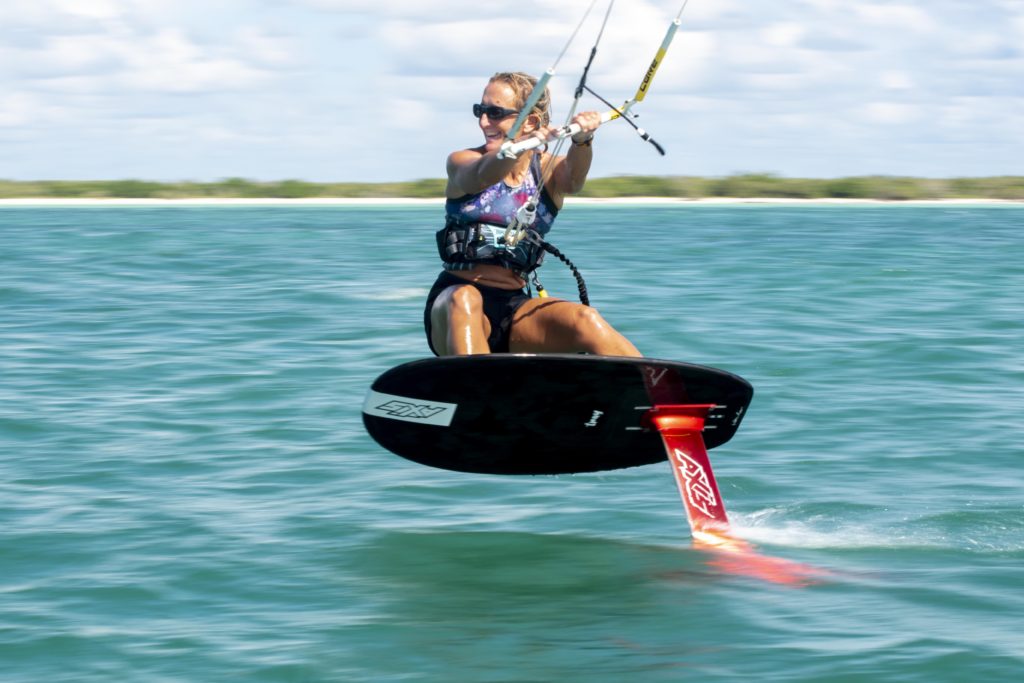
Myth #6 – “I’m intimidated by the board”
Maybe it’s the way women learn, or just that women plan and think things through that makes us more risk averse? I’d love to hear your thoughts on this!
There is an element of risk to learning to kitesurf, and we manage those risks by choosing the right equipment for the wind speed, safe places to kite, and going out with friends.
This also applies to foiling, we choose the right equipment (helmets are essential!), adjust the settings, plus we have a shorter mast to help get the feeling of starting and flying, before upgrading to a full length mast when you’re ready.
What are you waiting for? If it’s warm waters, and ideal conditions to learn to foil in, then drop us a line at whenitswindy.com. (or directly via Cathy Padgett (@super_padge) • Instagram photos and videos ). We’ve got beginner friendly gear, and we’ll help cheer you on!
Links:
Holbox Kiteboarding Launch New Website
With the 2020/21 Holbox Kite season approaching Holbox Kiteboarding have launched their new website. If you’re thinking of kiting in Holbox , Mexico then they’re the school to choose. Check it out here.
www.holboxkiteboarding.com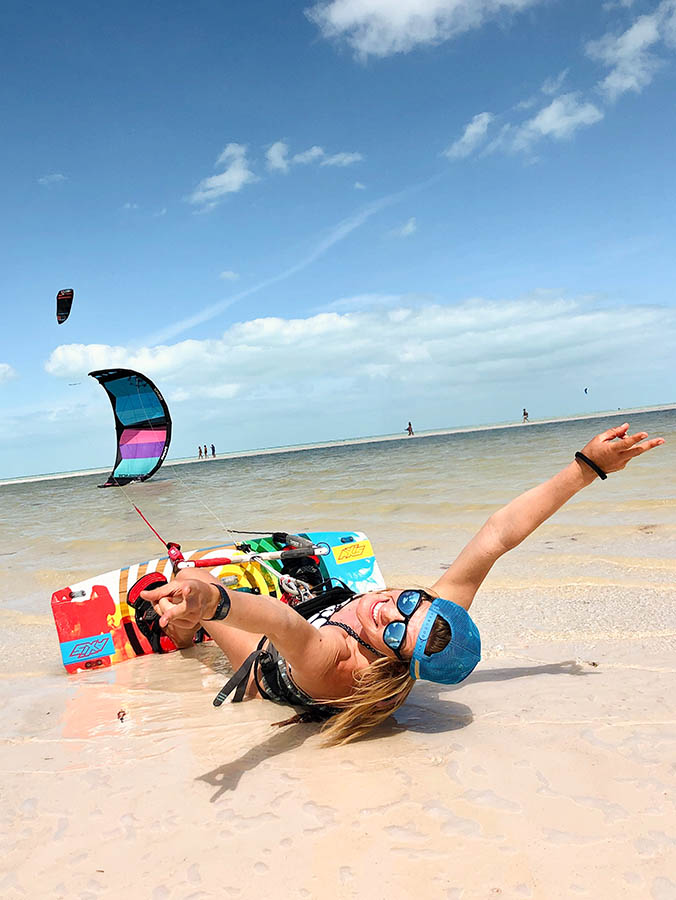
This year they are adding windfoil and wingfoil to the list of services offered along with all the usual kite lessons, Kite foil and rental gear.
The website has Blog articles by Cathy and many photos by when it’s windy.
Holbox Kiteboarding is currently open during the low season but will reopen fully on 1st November 2020.
Waking up to Wake Foiling on Holbox
We had a visit from Evan and Dorothy the other day, they brought with them bags of Axis Foils and Boards for us to try. Here’s a video of us trying out one of the surf foils behind a boat. Foiling on the wake is such a magical feeling. Can’t wait to try it again.
We were riding the S-series 1000 High Aspect wing and 2020 Carbon Tray 125 a lovely combination.
What combination works for you at the back of a boat?
Holbox, Mexico windy season.
This years windy season in Mexico will soon start once again, so the time is right to tell you all about the wind seasons in Isla Holbox.
Holbox is blessed with a long windy season which normally runs from November until the end of May.
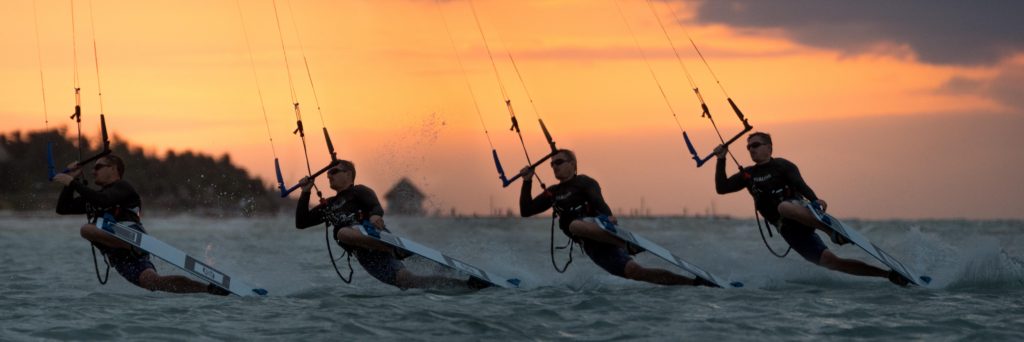
The Main season is made up of two overlapping but very different seasons, the winter season and the spring season. Both seasons show off the different characters of it’s beautiful kite spots.
Link to Holbox Kiters Guide – Click Here
The Winter Season is the season of the Norte and is just about to start on Isla Holbox.
During the winter season (November – February) we get winds ranging from 12-25 knots. Usually starting from the North, strong and fierce (20-25 knots) and then gradually veering and weakening through NE and then Easterly. The cycle usually lasts 4-5 days and then repeats. A 3mm wetsuit is recommended for all but the hardiest of riders during the Nortes. During the Norte the skies will turn grey, the wind will blow strong and you’ll find us riding at Kite beach during these storms enjoying the flat water in the lagoon.
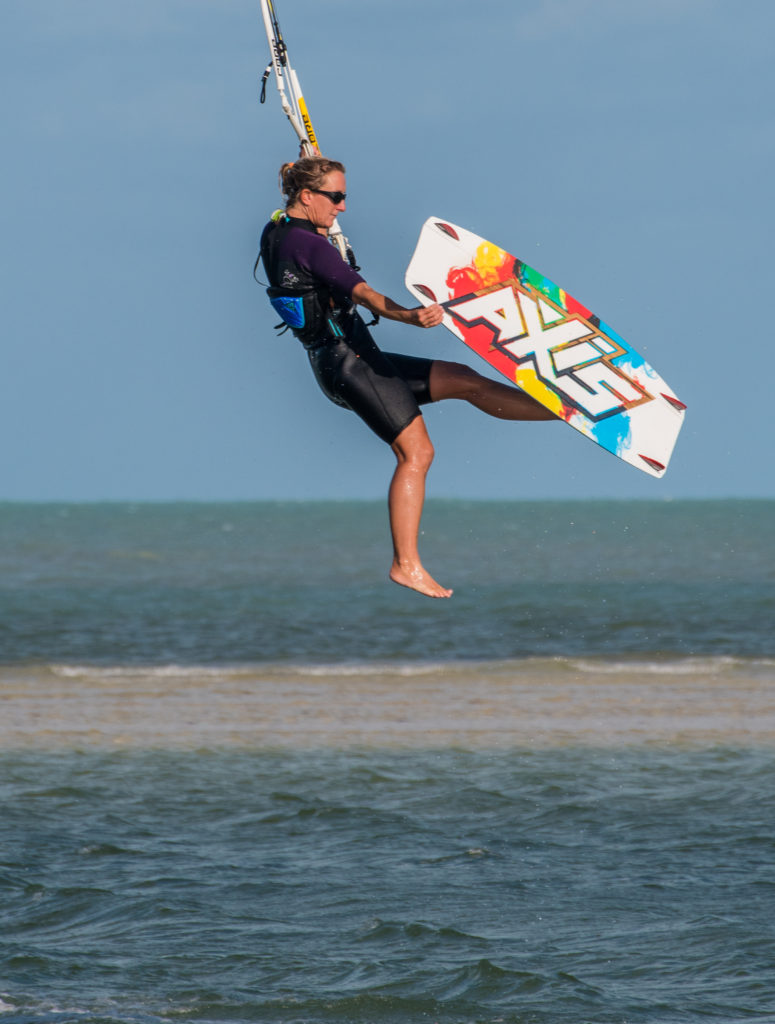
As the Norte passes us and the winds veer more Easterly we’ll head off to Punta Mosquito by boat.
Spring Season (Mid February – End of April) This season sees water temperatures rise and the consistent NE – E winds kick in that usually blow from 12-20 knots. The Nortes of the winter continue to periodically blow, but much less often and usually finish late March. Nothing beats a good March Norte – Strong winds, flat and warm water.
In April the wind is predominantly from the East and sees near daily boat trips to Punta Mosquito…
…or you could stay behind on Main beach to enjoy some epic flat water kitefoil conditions with me.
May is the last month of the traditional wind season and usually sees a alot of spring pattern winds for the first two weeks and then gradually transitioning to our thermal summer pattern with lighter but more Northerly winds. In June the rains often start.
Summer Time – There can be wind in the summer but it is much less predictable. If you are on Holbox during the summer and lucky enough to find wind, quickly grab your kites and enjoy a ride in empty waters. The usual spots will work but don’t expect the schools to be there as they usually shut down for the summer.
Check out next weeks article on the kite spots of Holbox.
If you cant wait that long please contact me via
or contact Holbox Kiteboarding School directly
teachme@holboxkiteboarding.com
WhatsApp +5219841795021
Kitefoil in Sri Lanka (summer season)
The last two summers saw Cathy and I visiting Sri Lanka. I concentrated mainly on my Kite foilboarding both as a means of transport and just general freeride . If I could foil to my destination and there was still daylight, I’d skip the tuk-tuk or taxi to ride there and back. The coastline here lends itself to exploring with the foil. The winds in Sri Lanka are generally strong in the summer time, blowing mainly from the SW. At 100kg I spent nearly the whole summer on a 6/7m with a handful of days on a 10m. This summer there were only 2 days where I couldn’t foil… due only to unseasonal rain.
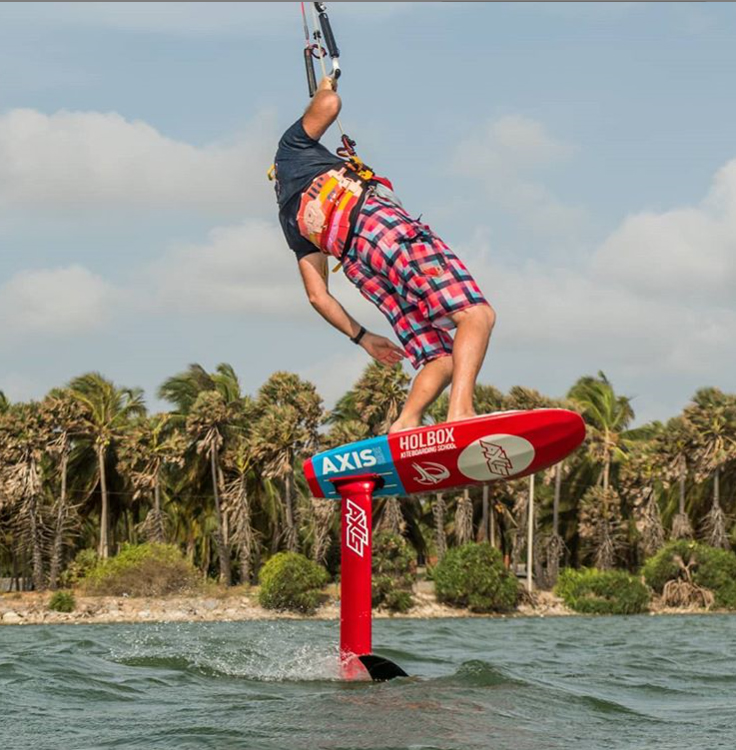
The sea is quite choppy during the summer season with some foilable although not world class waves. The lagoons are flat and great for learning or training freeride manoeuvres. Just watch out for the varying depths and sometimes shallow water. There is something for all levels of foiling but you will have to decide on the conditions that you like best. The winter season has different strength and direction of winds of which I have no experience. This post only deals with the summer season from May until the end of September.
Kappalady Lagoon & Sea (Summer Season)
Wind strength 16-22 knots Smooth stable wind.
The wind in Kappalady is much smoother than Kalpitya or Puttalam Lagoon however the lagoon is much smaller…
Here’s a video of Kitefoil from Kappalady to give you an idea of the usable area.
Foiling in Kappalady lagoon is challenging but it is still one of my favourite flatwater spots. The area where foiling is realistic in the lagoon is maybe 100m by 100m. This means great conditions for practicing high numbers of turns, but not so great if what you want to practice is long runs.
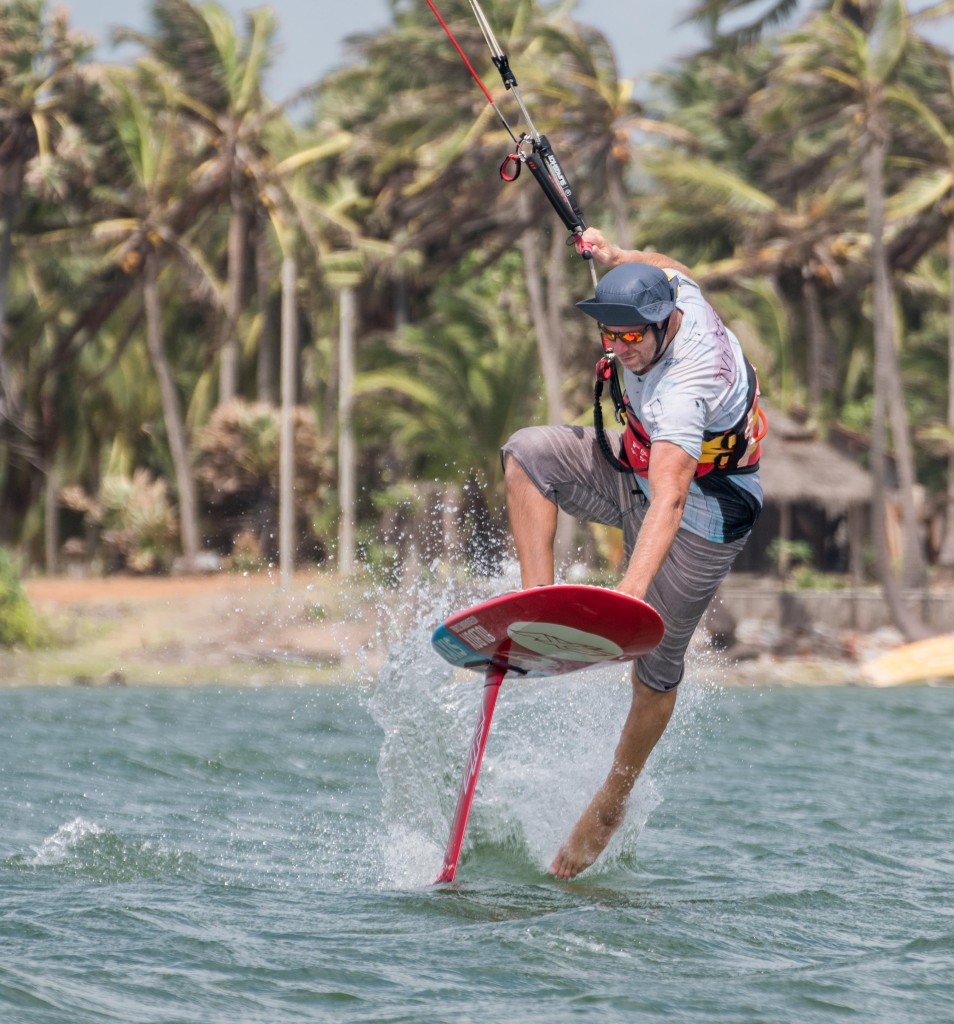
If you are going to foil in this lagoon, you will need to learn where the deep areas are. I use a 90 mast happily in the deep areas. The change from deep to shallow is very dramatic so watch out. The photo below shows in green the deeper area but please be aware that the lagoon changes from year to year. The great thing about the area is that you will normally have it to yourself as beginners tend to avoid going so far down the lagoon.
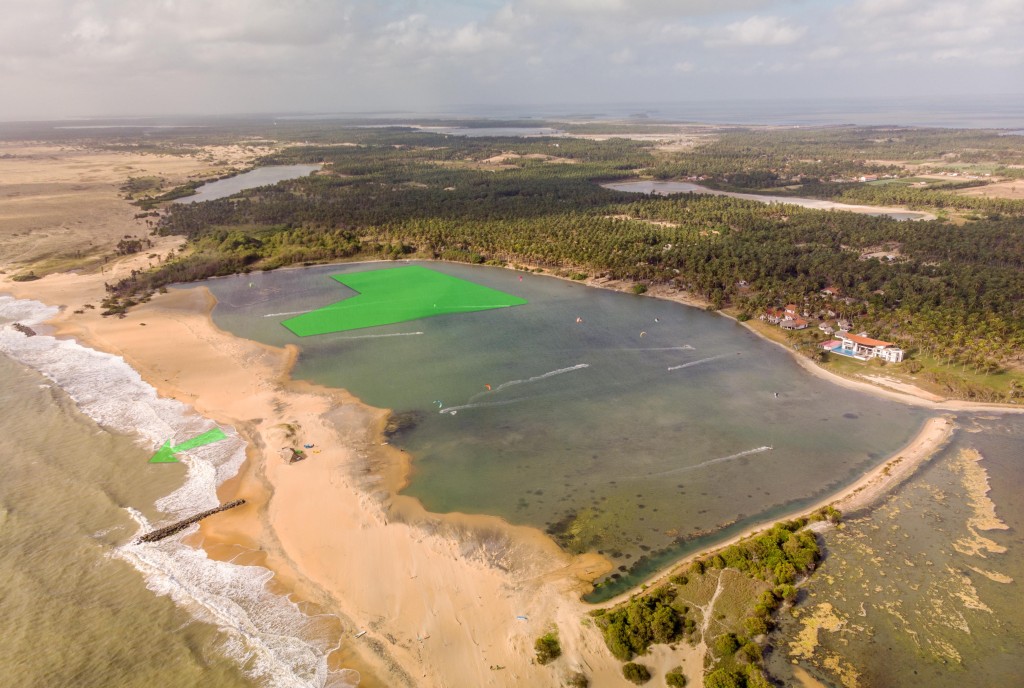
There are some good foilable waves that can be found straight out from the lagoon about maybe 500m to 1km from the shore. Be aware that the shore break can be pretty formidable when the wind is up. Best spot for entry this year was just downwind of the sea defense behind Ilfram’s cocounut shack. See green arrow on above photo.
Also be aware that there is a military practice range to the North between Donkey Point and Kappalady. Check with the guys at Kite House Café or Kite Kuda before entering this zone. If the area is being used it’s not allowed to enter. I’ve seen it when the area was live and some of the explosions in the sea are immense.
Kalpitya Lagoon (Summer Season)
Wind strength 16-22 knots – gusty
This lagoon is much bigger than Kappalady as is it’s foilable area. This lagoon is more suitable for learning the basics and for making nice long runs. However I would strongly recommend the use of a shorter mast 75cm or shorter. At most tide states you will be able to use a foil with strut/mast of this length. There are some shallower areas but if you check with any of the schools they should be able to point them out to you.
I used a 90cm mast and found the area out to the east of Rascals towards Sri Lanka Kite to be the most usable area. Don’t forget that the lagoons change over time so always check with the locals first.
The size of this lagoon is great for learning to foil and for general freeride foiling but watch out for the occasional fishing net and gusty wind. The Lagoon can also be quite be busy with beginner kiters so keep your eyes peeled. Due to the varying depths and number of beginners I don’t recommend Kalpitya Lagoon as a good place for high performance / race foil training.
Alankuda Beach
Wind Strength 16-22 knots – Smooth winds
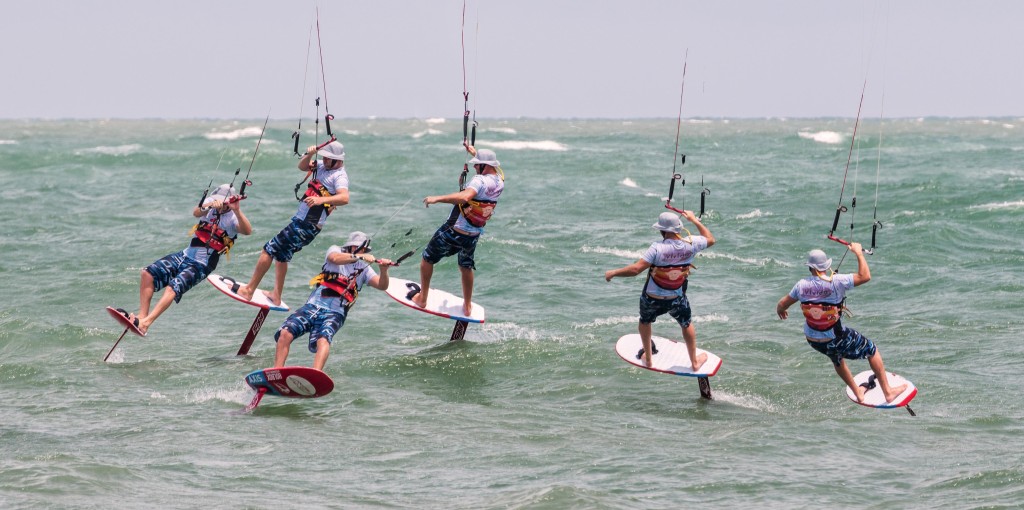
For learning to foilboard this spot is not ideal unless the wind is light, better to go to Kalpitya. However for competent freeride foilers the area is very rideable and great fun but expect big chop and waves. Longer masts/struts of 90cm and longer are recommended . There are two lines of some very foilable waves just downwind from the Naval look out tower these seem to be at their best on spring tides especially if the wind shifts from on-shore to side shore. The prevailing wind direction in the photo below is from left to right or Southwesterly.
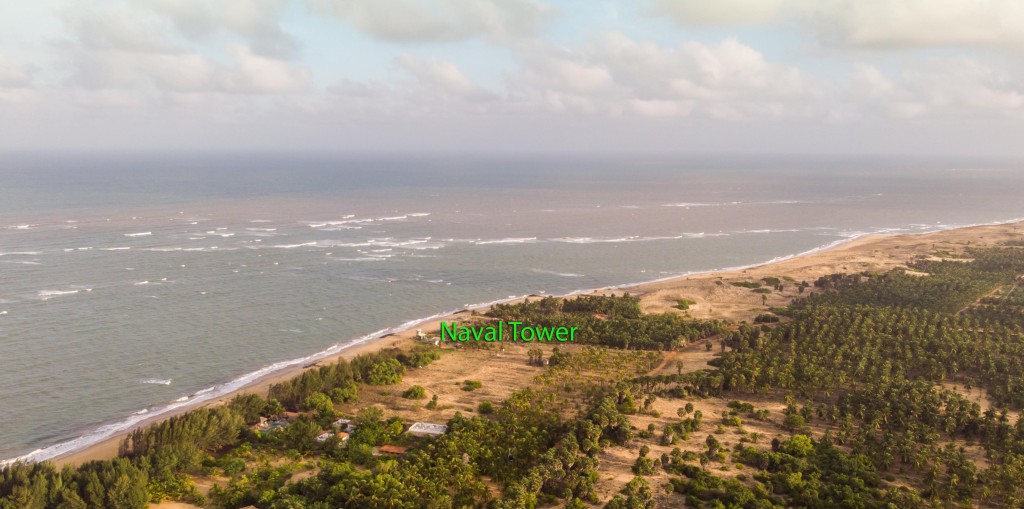
The shore break on most of the North Western coastline can be pretty heavy if the wind is onshore so take care entering the water. At Alankuda beach the shore break is actually a bit lighter than most spots nearby.
The only useable kite launch areas are from Alankuda Kite School at Bar Reef Resort and Udekki Hotel however don’t expect there to be many other kiters to help you launch and land. Self launch and land is the order of the day.
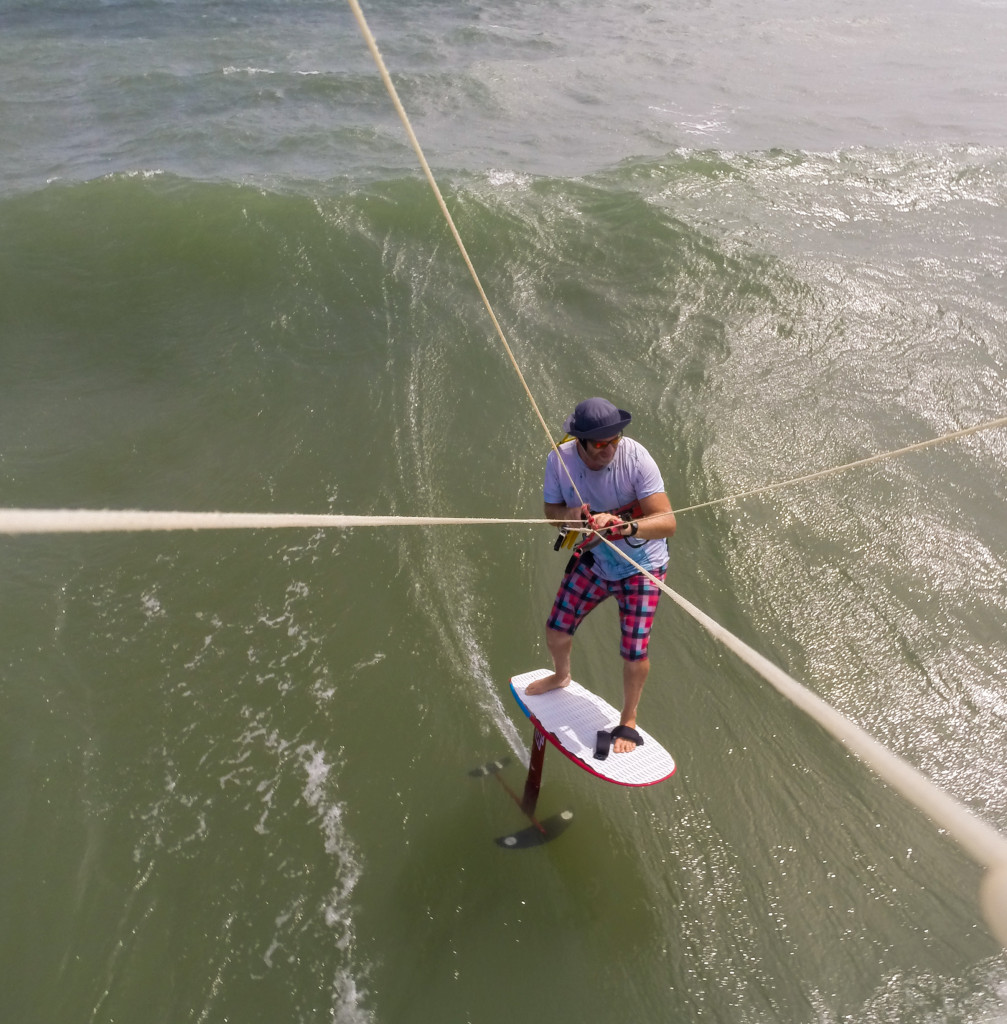
This area is a good start point for a downwinder to Kappalady lagoon or even Kalpitya Lagoon via Donkey Point if the military aren’t practicing. Take care of the depth around donkey point.
You’ll find big ridable wind swell between Talawila and Alankuda Beach just in front of the wind turbines on the way down to Kappalady.
Puttalam Lagoon
16-22 knots Smooth to Gusty
This area has a massive potential for foiling due to its size. Accessed most easily by boat from Kalpitya Harbour or from a kite trip to one of it’s islands (vella, Ipantivu etc). Talk to boat captains or trip organizers to find out deeper and shallower areas. The lagoon is huge and borders Wipattu national park on its Northwestern Shoreline. I have only experience of the Northern part of the lagoon from Kalpitya up and there is some serious space to explore. Last summer we did a huge 150km downwinder from Kalpitya through the Puttalam Lagoon to Mannar with Freeriders extreme Kite tours. If you get chance definitely worth doing. I intend to explore Puttalam lagoon more next year.
Vella Island
Always on the list of trips to do on a Srilankan kite holiday. It is best known to freestylers but is great for foiling too. Most of the freestylers will be tight up against the island giving you lots of space just downwind. Check the depths with boat captains or instructors first as sands are always shifting.
In a spin on Holbox
Latest video from Holbox
To find out more about foilboarding take a look here
Hydrofoil 360
Caught on camera with the homemade linemount, a foiing 360.
Cathy kindly leant me her Axis Maroro foil and freerace board whilst mine is being repaired.
A beautiful setup.
A great day off – Foiling around on Holbox
A day off is always great but even better when it’ windy too.
Winds were perfect for the foil. Initially 12 or 13 knots side off meaning fairly flat water. (we had boat support if things got tricky) Saulius and I foiled upwind 4 or 5 km to Punta Mosquito but as we got closer the point the wind shifted more side shore and stronger so I decided to head back to the main spot and enjoyed being very powered on my 10 edge. It was great to get some solid practice and consistency to my foiling tacks and jibes. Our trusty gopro and homemade linemount caught some of the action.
